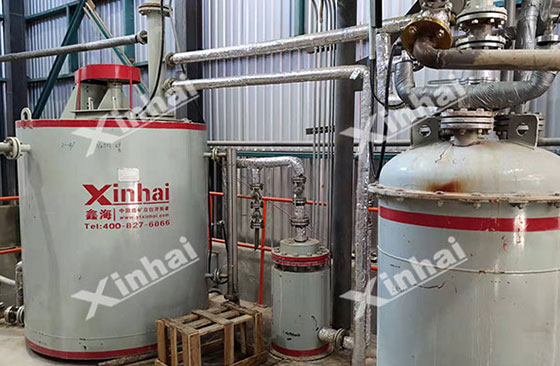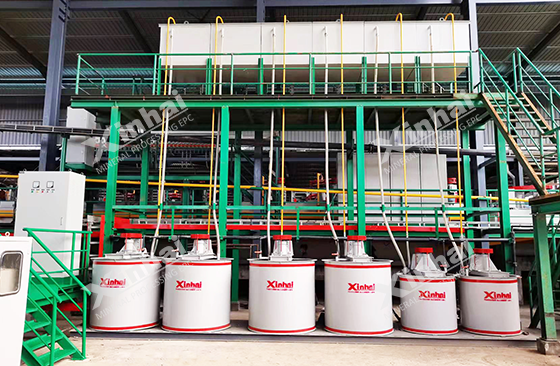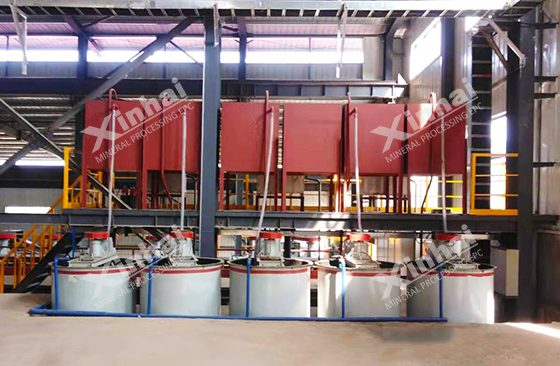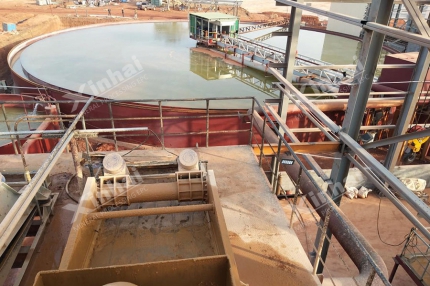Activated carbon beneficiation is a physical beneficiation method that extracts and enriches valuable minerals based on the high adsorption capacity of activated carbon, and separates and recovers valuable metals from ores. In lead-zinc ore beneficiation, activated carbon is mainly used to adsorb metal ions such as lead and zinc to separate them from other impurity minerals.
Use the table of contents below to navigate through the guide:
01Activated carbon beneficiation method for lead-zinc ore

Adsorption principle: Activated carbon has rich pore structure and huge specific surface area, and can adsorb metal ions such as lead and zinc through physical adsorption and chemical adsorption. Physical adsorption mainly adsorbs metal ions on the surface of activated carbon through van der Waals force; chemical adsorption is through the active groups on the surface of activated carbon and metal ions to react chemically to form stable compounds.
Desorption principle: Lead, zinc and other metal ions adsorbed on activated carbon can be desorbed from activated carbon by the action of desorbents. Commonly used desorbents include sulfuric acid, hydrochloric acid, sodium hydroxide, etc. During the desorption process, the desorbent reacts chemically with the metal ions, destroying the adsorption bond between the activated carbon and the metal ions, allowing the metal ions to re-enter the solution.
02Activated carbon beneficiation process of lead-zinc ore

Ore pretreatment: First, the lead-zinc ore is crushed, ground and other pretreatments to make the minerals in the ore reach a monomer dissociation state. The degree of crushing and grinding needs to be determined according to the requirements of the subsequent beneficiation process. Generally speaking, the finer the grinding fineness, the higher the monomer dissociation degree of the mineral, and the better the beneficiation effect.
Flotation: The slurry after grinding enters the flotation operation, and flotation agents are added to separate the lead-zinc minerals from other impurity minerals. Commonly used flotation agents include collectors, frothers, regulators, etc. During the flotation process, the lead-zinc minerals are adsorbed by the flotation agents, attached to the bubbles and float to the surface of the slurry to form a foam product, that is, lead-zinc concentrate; while other impurity minerals remain in the slurry and become tailings.
Activated carbon adsorption: The lead-zinc ore concentrate slurry after flotation enters the activated carbon adsorption operation, and activated carbon is added to make the metal ions such as lead and zinc adsorbed by the activated carbon. The amount of activated carbon and the adsorption time need to be determined according to the properties and requirements of the ore. Generally speaking, the more activated carbon is used, the longer the adsorption time is, and the better the adsorption effect is.
Desorption: The lead, zinc and other metal ions adsorbed on the activated carbon are desorbed from the activated carbon by the action of the desorbent to form a desorption liquid rich in metal ions. The desorption liquid can recover metals through electrolysis, precipitation and other methods to obtain metal products such as lead and zinc.
Activated carbon regeneration: The activated carbon after desorption can be regenerated by heating, pickling and other methods to restore its adsorption performance so that it can be used again.

Activated carbon is not the main beneficiation method in lead-zinc ore beneficiation. It is mostly suitable for lead-zinc ores containing gold, especially those with low gold content and complex ore properties. In practical applications, it is necessary to select appropriate beneficiation process parameters and equipment according to the ore characteristics and requirements of the lead-zinc ore to achieve the best beneficiation effect. At the same time, it is also necessary to strengthen the regeneration and recycling of activated carbon to reduce production costs and improve economic benefits.


 marketing@ytxinhai.com
marketing@ytxinhai.com  0086 13810327080
0086 13810327080 






































































































 CHAT
CHAT MESSAGE
MESSAGE






